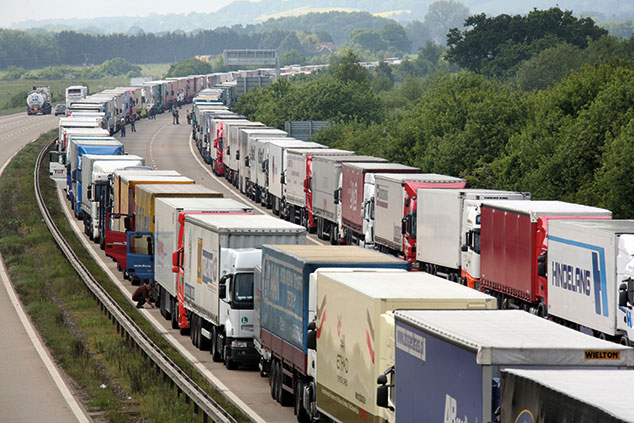
When Britain voted to leave the EU, almost nobody was talking about the customs union. Today it’s at the centre of the Brexit battleground. Simon Wilson reports.
What is a customs union?
It’s an agreement between a group of countries to scrap tariffs and quotas governing trade between them, and impose a common external tariff. The concept has been around for centuries – the Zollverein of the 1830s that abolished tariffs among the German states is one famous example. The purpose of a customs union is to facilitate trade between members, an advantage that is increasingly important in the age of cross-border supply chains and just-in-time delivery.
And unlike in a free-trade area, there’s no need for expensive rule-of-origin checks. The EU’s customs union was completed in 1968. When the UK leaves the EU, we will by definition leave the EU’s customs union. The question is whether we should try to do a post-Brexit deal that replicates its benefits.
Would that make sense?
It depends who you ask. A customs union entails a common trade policy, meaning that members aren’t free to negotiate their own trade deals with third countries. Having this freedom is touted by some Brexiters as one of the main benefits of Brexit. On the other hand, being part of a large customs union gives members collectively more leverage to do better deals with other trading partners, as well as reducing barriers to trade within the customs union.
Which is preferable is obviously still a matter of often quite-ill-tempered debate, but the Institute of Fiscal Studies estimates the costs of leaving the EU customs union will far outweigh the small gains to be made by doing trade deals – especially once one takes into account the impact of customs delays, storage costs, regulatory differences and other non-tariff barriers to trade.
Wasn’t this decided in the referendum?
Not at all. During the referendum, the technical-sounding question of the customs union was scarcely mentioned, which makes its move to the centre of the Brexit battleground all the more striking. The reason the customs union has become so contentious, though, is not solely due to arguments of trade policy, but the hard question of the UK/EU land frontier and the impact on Ireland.
Unless Northern Ireland remains in a full customs union, tariff and rule-of-origin checks will be needed. And unless it stays in a single market in goods, regulatory checks on agricultural and manufactured products will be needed. Both of these things mean an international frontier with some physical infrastructure – the “hard border” which the EU, Ireland, and the UK all agree must not and cannot happen.
What’s the simple solution?
There might not be one. Theresa May has promised to deliver an open Irish border, frictionless trade, and also third-party trade deals. All three might be nice, but she is negotiating with a far more powerful counterparty who insists that she can’t have them all. Moreover, for the EU to agree to a transition period at all, the UK still needs to agree the terms of an overall withdrawal agreement. And a mandatory part of the withdrawal agreement will be a solution to the Northern Irish border – which the EU insists must be agreed at a summit in late June, and finalised in treaty form by October.
Yet due to May’s weak position as the leader of a minority government and a divided party, she seems to be putting off the day when she has to make a choice about what form of Brexit she truly wants. And she still hopes to negotiate some form of complex compromise.
Such as what?
Either a “new customs partnership” (NCP) or a system of “maximum facilitation” (known as “max fac”). The former would create a byzantine system in which Britain would act as the EU’s proxy when handling goods from elsewhere, imposing EU tariffs (even if higher than our own) and passing the money to Brussels. Such a plan has at least united both May’s restive and Brexit-backing foreign secretary Boris Johnson (who called it “crazy”) and the pro-Remain Financial Times, which said it “fails to pass the laugh test”.
In short, it would be hugely impractical, and businesses have rejected it out of hand. The second option, max fac, simply means a mutual agreement to “maximum facilitation” at the border, for example by the use of high-tech tracking systems and trusted-trader schemes. But even assuming that technical (or other) solutions would work, they might not be acceptable to the EU, due to the need for technological infrastructure at the frontier.
So what is going to happen?
Last week, May agreed with her Cabinet that if all else fails, the whole of the UK will remain tied to a customs union with the EU beyond the end of the proposed transition period (31 December 2020) until “max fac” can be worked out properly, or another alternative to a hard border in Ireland can be found. This is effectively the same “backstop” plan for Northern Ireland that was agreed with the EU in December 2017.
It commits Britain to “maintain full alignment with those rules of the internal market and the customs union which, now or in the future, support North-South co-operation, the all-island economy and the protection of the 1998 [Good Friday] Agreement”.
How might that pan out?
May hopes this arrangement would let the UK work on new trade deals with third countries while also negotiating one with the EU. But Brexiters fear it would slow down momentum towards a clean Brexit, and increase the likelihood of an outcome that looks remarkably like membership of the single market and customs union. In such a scenario, May’s grip on the leadership of the Conservative party would loosen.
Meanwhile, the EU would worry that such a generous deal would encourage anti-EU movements in other member states. Two years after the referendum, the final shape of Brexit is still far from clear.